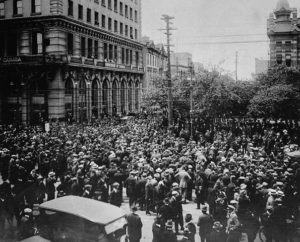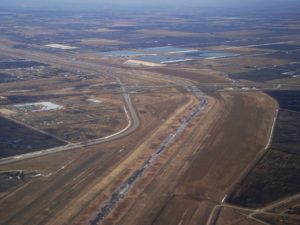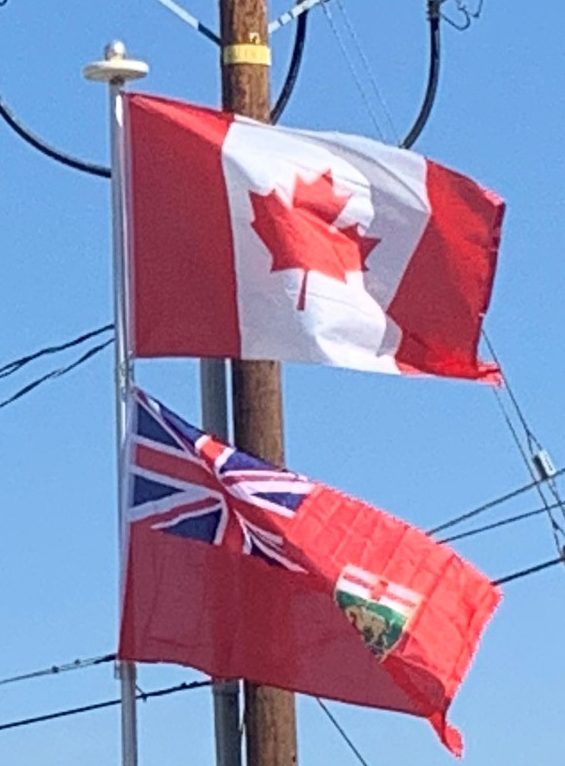
Government efforts to violently crush the strike, including a Royal Northwest Mounted Police charge into a crowd of protesters that resulted in multiple casualties and one death, had led to the arrest of the movement’s leaders. In the aftermath, eight leaders went on trial, and most were convicted on charges of seditious conspiracy, illegal combinations, and seditious libel; four were aliens who were deported under the Canadian Immigration Act.
The Great Depression (1929–c. 1939) hit especially hard in Western Canada, including Manitoba. The collapse of the world market combined with a steep drop in agricultural production due to drought led to economic diversification, moving away from a reliance on wheat production. The Manitoba Co-operative Commonwealth Federation, forerunner to the New Democratic Party of Manitoba (NDP), was founded in 1932.
Canada entered the Second World War in 1939. Winnipeg was one of the major commands for the British Commonwealth Air Training Plan to train fighter pilots, and there were air training schools throughout Manitoba. Several Manitoba-based regiments were deployed overseas, including Princess Patricia’s Canadian Light Infantry. In an effort to raise money for the war effort, the Victory Loan campaign organized “If Day” in 1942. The event featured a simulated Nazi invasion and occupation of Manitoba, and eventually raised over C$65 million.
Winnipeg was inundated during the 1950 Red River Flood and had to be partially evacuated. In that year, the Red River reached its highest level since 1861 and flooded most of the Red River Valley. The damage caused by the flood led then-Premier Duff Roblin to advocate for the construction of the Red River Floodway; it was completed in 1968 after six years of excavation. Permanent dikes were erected in eight towns south of Winnipeg, and clay dikes and diversion dams were built in the Winnipeg area. In 1997, the “Flood of the Century” caused over C$400 million in damages in Manitoba, but the floodway prevented Winnipeg from flooding.

In 1990, Prime Minister Brian Mulroney attempted to pass the Meech Lake Accord, a series of constitutional amendments to persuade Quebec to endorse the Canada Act 1982. Unanimous support in the legislature was needed to bypass public consultation. Manitoba politician Elijah Harper, a Cree, opposed because he did not believe First Nations had been adequately involved in the Accord’s process, and thus the Accord failed.
In 2013, Manitoba was the second province to make accessibility legislation law, protecting the rights of persons with disabilities.
Geography:
Manitoba is bordered by the provinces of Ontario to the east and Saskatchewan to the west, the territories of Nunavut to the north, and the US states of North Dakota and Minnesota to the south. The province possibly meets the Northwest Territories at the four corners quadripoint to the extreme northwest, though surveys have not been completed and laws are unclear about the exact location of the Nunavut–NWT boundary. Manitoba adjoins Hudson Bay to the northeast, and is the only prairie province to have a saltwater coastline. The Port of Churchill is Canada’s only Arctic deep-water port. Lake Winnipeg is the tenth-largest freshwater lake in the world. Hudson Bay is the world’s second-largest bay by area. Manitoba is at the heart of the giant Hudson Bay watershed, once known as Rupert’s Land. It was a vital area of the Hudson’s Bay Company, with many rivers and lakes that provided excellent opportunities for the lucrative fur trade.
